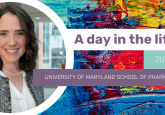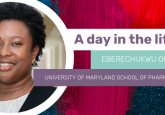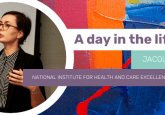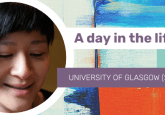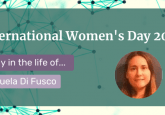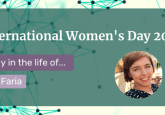International Women’s Day 2020: a day in the life of…Christina Mack
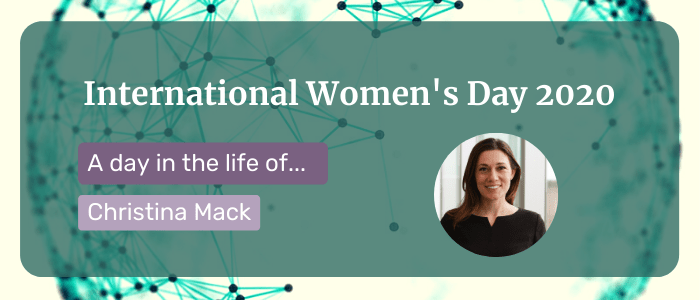
In this feature for International Women’s Day 2020 (8 March), we interview Christina Mack (IQVIA; NC, USA), exploring what a typical (or not so typical!) day is like.
Christina Mack is an epidemiologist and computer engineer, with roles that merge these two disciplines. Mack is the Vice President of Epidemiology and Clinical Evidence at IQVIA (NC, USA), where she leads studies of medical devices and drugs, and heads the Sports Injury and Analytics division, running studies in injury prevention and athlete care.
Mack also serves as an adjunct faculty member at University of North Carolina at Chapel Hill (NC, USA), where she is active in professional societies and in public—private partnerships with regulators and industry partners. Mack serves as the Co-Chair of several scientific and methods committees, such as the US FDA’s Medical Device Epidemiology Network’s Scientific Oversight committee.
Last but not least, Mack is an active mentor, focused largely on women in STEM and career choices, and serves on the steering committee of IQVIA’s Women’s Network.
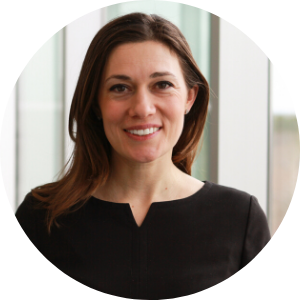
Mack grew up in Texas and, after stints in New York (USA), South Bend (IN, USA), Zambia (East Africa), and Boston (MA, USA), resides in Chapel Hill (NC, USA) with her husband and three awesome kids. When she’s not working, you can find Mack hiking in the woods near her house, camping with her kids, travelling with laptop in-hand, coaching 3-year old soccer teams, and spending as much time with her family and friends as possible.
1) My alarm goes off…
…and like most parents, I jump into action, ideally with a cup of coffee in hand and a sweet moment with my kids before we all set off and start the day. I like to begin work early, and head upstairs to my home office to start with the hard stuff before going into the office. My strategy is to tackle the tough science, the writing and the things that require the deepest part of my brain as close to that alarm as possible. Things I think about are ways to explain complex topics; what our analytic results mean in practice; and how to design and interpret studies in a valid way, with context and without bias.
2) I’m responsible for…
Designing and running large studies, largely those that take advantage of data that are already recorded in healthcare settings, and often linked and enriched with something extra — other contextual databases or perhaps information about how patients are feeling and their ability to carry out their activities of daily living.
Over the last decade, there has been an explosion in the availability of ‘real-world data’, such as electronic medical records, insurance data and person-generated data like wearables. My job is to figure out how to use these massive datasets to learn about injury and disease, and ultimately improve health. This is complicated because this type of information is usually collected for administrative reasons or during clinical care – it’s not as straightforward as data collected by questionnaire or through structured assessments like a clinical trial.
My work in sports is particularly interesting, as these organizations are committed to preventing injuries and improving the health of their athletes. To do this, they access mountains of data that are collected in the ordinary course of their sport — health records alongside minutes played, surface conditions of a game, specific settings of injury. The goal is to analyze data and interpret results in a way that is actionable and can positively impact players. One of the most gratifying parts of this work is sharing the results with decision makers who can take action on findings in real time.
3) My typical day…
There is no typical day! What I love about my job is that my team and I are answering research questions across many topics: do athletes get more injuries on artificial turf compared to grass fields? Can we expand a drug label or understand which patients really benefit from a drug using electronic health records and patient-reported information? How can we interpret the results of machine learning and artificial intelligence in a way that influences providers and impacts patients? What are the right methods to detect a safety signal from medical devices on the market and being used by patients? Is everybody at risk or are there some especially sensitive groups of patients? How does playing schedule impact injury occurrence among athletes? How can we design studies that evaluate things that are important to patients, providing information that improves patients’ lives in ways that matter to them?
Oh — and how do I keep my team learning, growing and tapped into the big picture of what we are doing?
4) The strangest thing that has happened…
Is the way the industry has evolved to merge tech, data science and public health. I have a computer engineering degree and worked in information tech and management for the first part of my career. When I went back for a PhD in epidemiology, it looked and felt like a career change. Now, with the advent of data science and machine learning becoming essential tools with which to diagnose and learn how to effectively treat patients, my training in both computer science and epidemiology is a great match!
5) The best part of my job…
Scientifically: Answering tough questions, solving complicated problems and making a difference in patients’ lives. I like being able to use diverse research methods and tools to get practical answers in a timely manner. Our mandate is to use the advances in technology, as well as access to all of these new data sources, to improve patient health. To do this, I get to work with a large, global team and engage with interesting, smart people across various disciplines — sports scientists, engineers, regulators, business strategists, clinicians…the list goes on. It’s incredible to be able to merge scientific expertise with the perspectives of other experts and see exponential results.
Personally: My team and my students have a special place in my heart, as helping them navigate their careers and seeing them meet challenges and find success is what gives me energy on even the toughest day.
6) The worst part of my job…
When I realize I’ve been sitting at my computer all day, on calls and multitasking. We all do it, but the more we can get up, talk to others and then be focused when we are at our desks, the better off we are. When that to-do list seems a bit overwhelming, I use lists and organizational tricks to make it manageable or go for a run to re-frame and re-prioritize. A treasured mentor taught me to ‘seek out what magnifies your spirit’ — on those rare days that I don’t feel that, I make sure I find it.
7) After work…
I go home to my kids! I have discovered that the kids give me exactly the energy I need to clear my head from the day, disconnect and renew my perspective for the next time I sit down to work. Evenings are a mix of checking homework, family dinner and, on a good night, playing Cribbage, backgammon or other games — they keep my brain sharp!
8) I always wanted to be….
A writer — a travel journalist for national geographic. What I love about the field of science, and particularly epidemiology, is that communicating findings is critical to making an impact — doing good science is only half of the job. Which means — surprise! — writing and traveling. It’s been a wonderful discovery to find that writing, as well as public speaking, are so integral to the career I chose, and I haven’t landed too far from that original goal — although I haven’t run across any ocelots yet!

